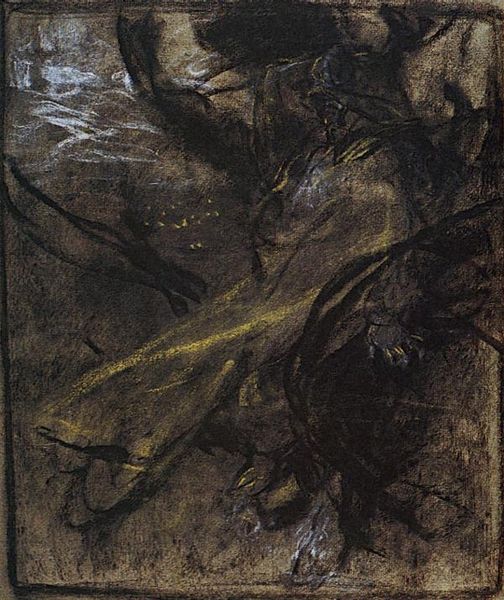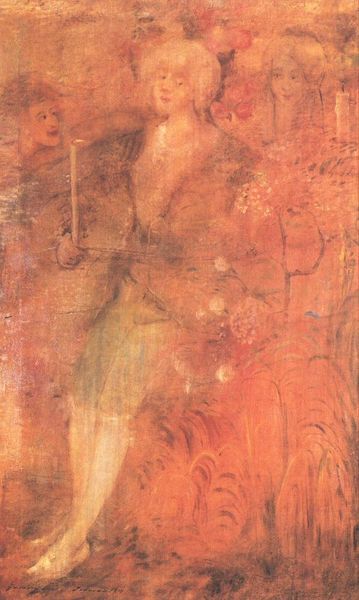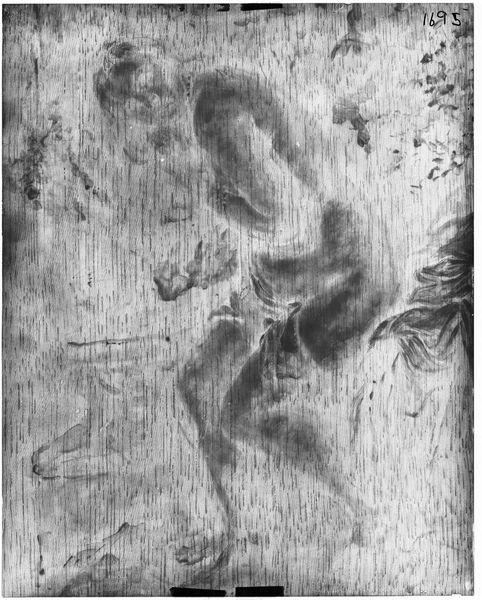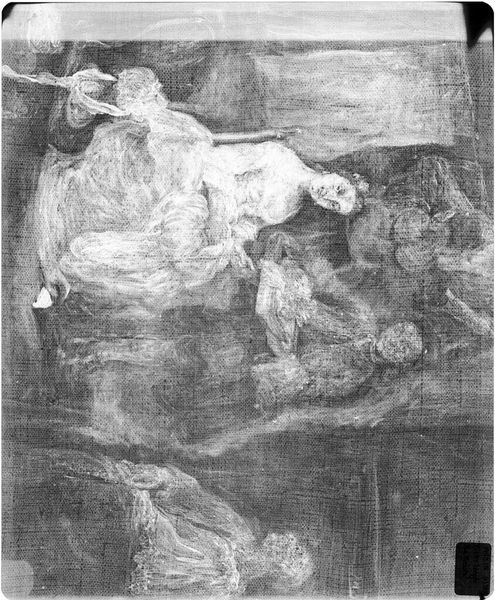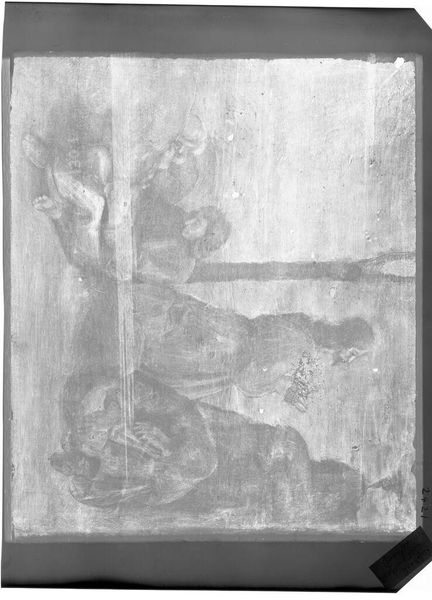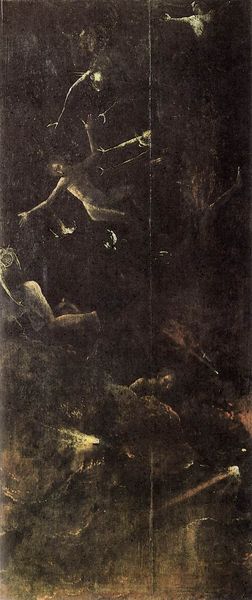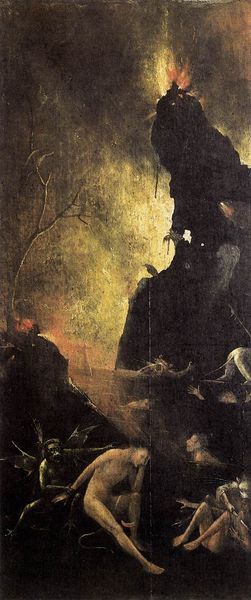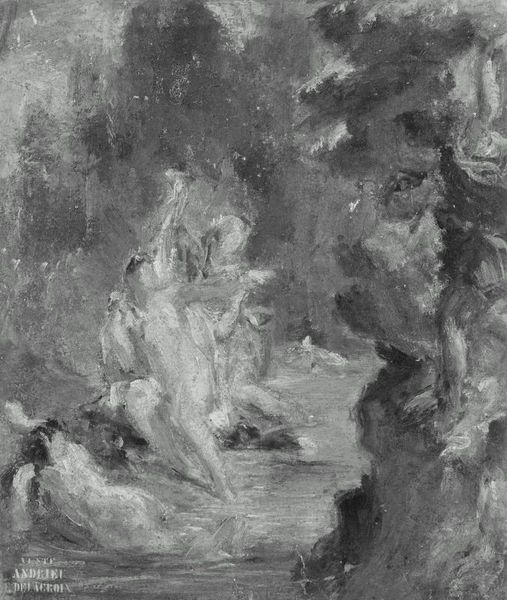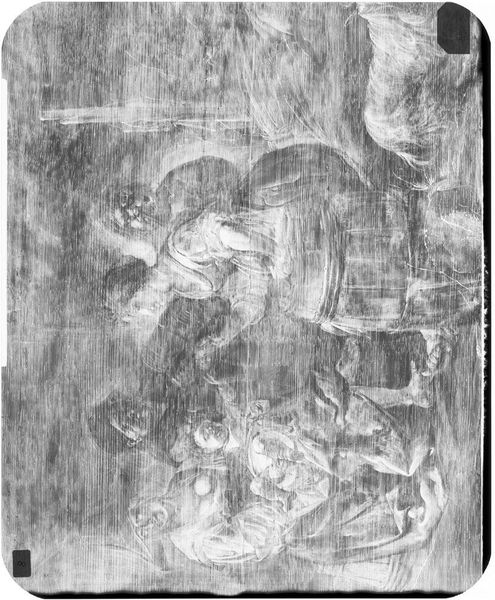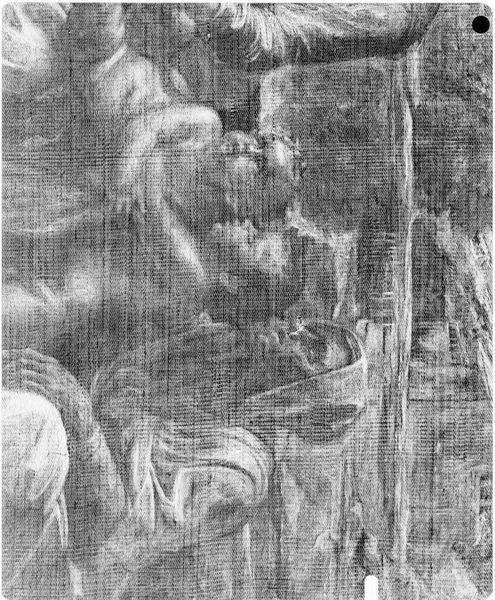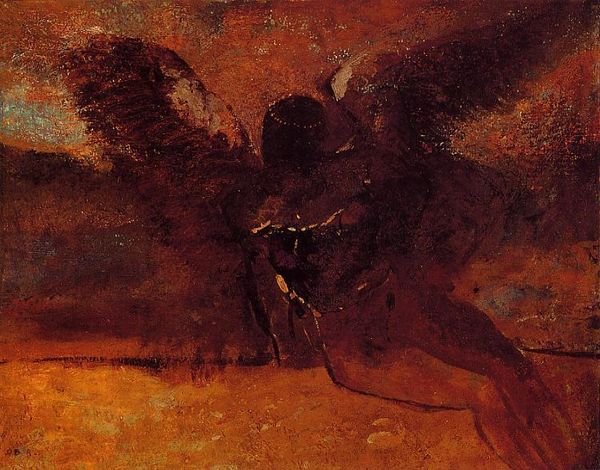
Copyright: Public domain
Editor: This charcoal drawing, "Pan chasing a Nymph," created in 1855 by Arnold Böcklin, feels so intense. The figures almost emerge from the darkness. How do you interpret this kind of romanticized portrayal of mythology in the context of 19th-century art? Curator: It's a potent image, isn't it? Böcklin, a Swiss artist, situated himself within a Romantic tradition that was deeply interested in revisiting classical themes, but with a very 19th-century sensibility. Think about the rise of the museum as a public institution at this time. What impact might that have had on the way artists chose to portray classical subjects? Editor: That's a good question. Did the new accessibility of art change the relationship between the artwork, the viewer, and these historical or mythological stories? Curator: Absolutely! Suddenly, you have a broader audience engaging with art, and artists responding to that. Böcklin uses the drama of the chase, the overt sexuality, and the intense contrasts of charcoal to engage the viewer. But it also asks us to consider the politics of that engagement. What does it mean to represent a nude female figure being pursued, in a public forum? Editor: So it’s not just a re-telling of a myth, but a statement on the role of women and the public gaze, then and now? Curator: Precisely. Böcklin provokes a discourse around the institutional context, and who controls these visual narratives. It makes me wonder if a work like this, displayed today, still challenges our own expectations around seeing and representation? Editor: That definitely gives me a lot to consider about the social and cultural impact of art beyond just the aesthetic value. Thanks! Curator: Indeed, and looking closer, maybe we'll be able to unearth the tensions present throughout its complicated legacy and social narratives that continue to emerge from artworks today.
Comments
No comments
Be the first to comment and join the conversation on the ultimate creative platform.
